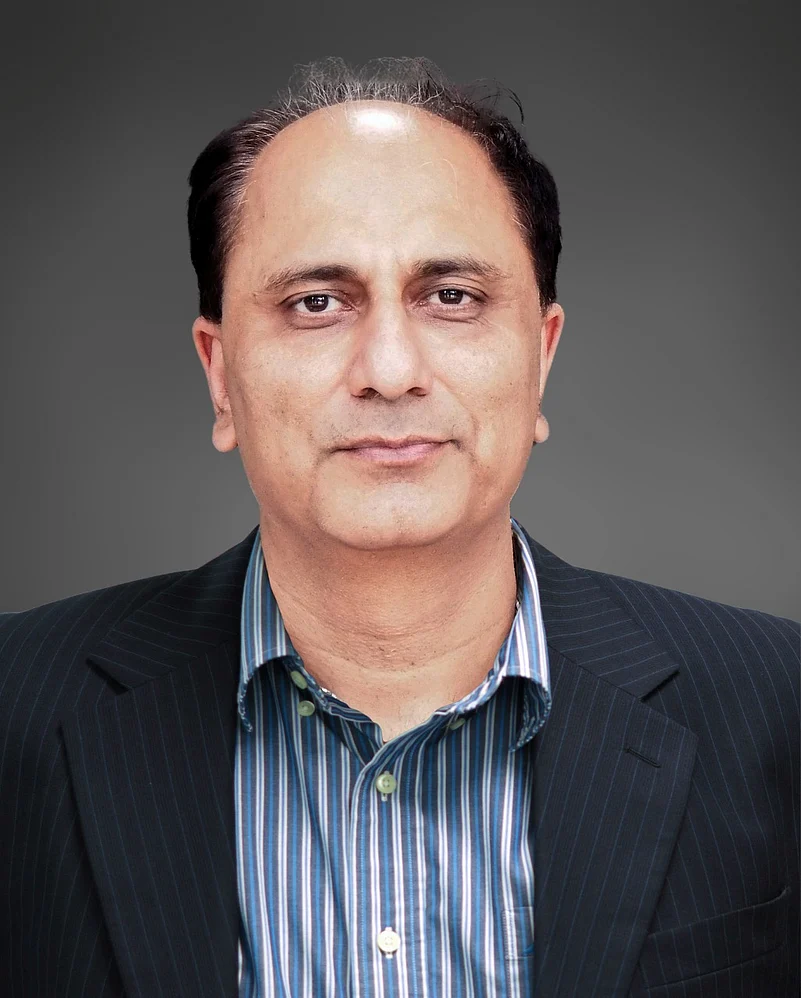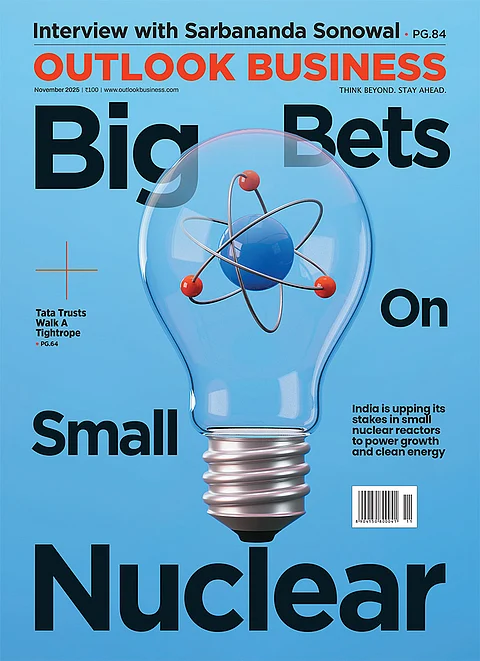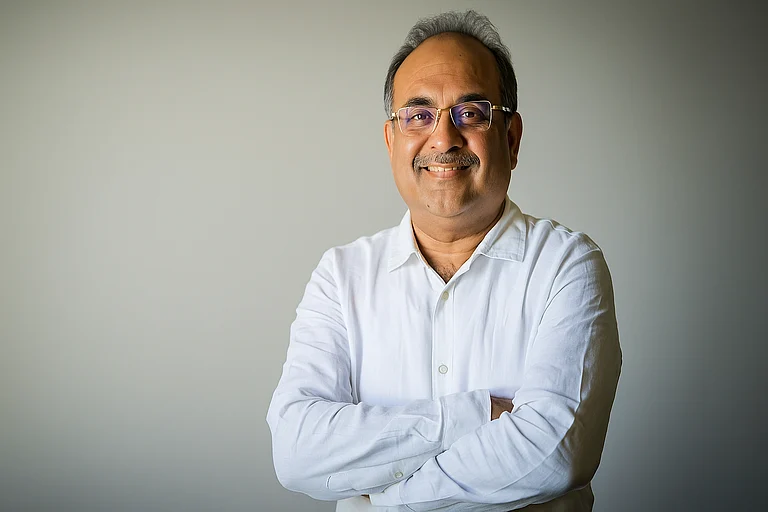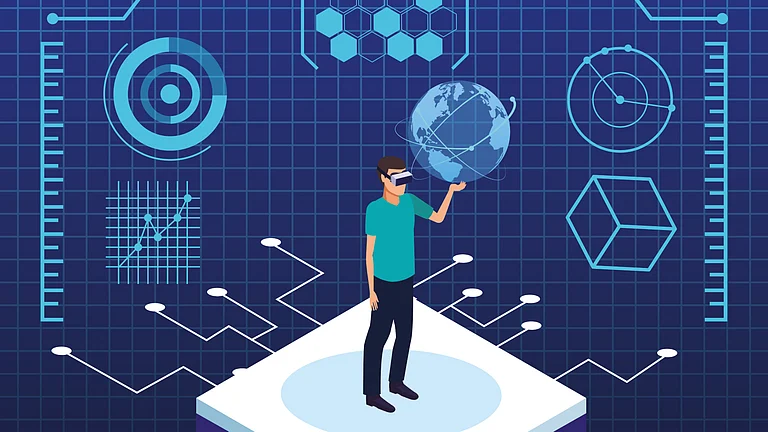India is rapidly emerging as a global hub for deep tech innovation, with 3,600 startups in the sector, ranking sixth in the world, according to a Nasscom-Zinnov study. To further accelerate this ecosystem through innovation, funding, and mentorship, the Nasscom Centre of Excellence (CoE) for IoT & AI was launched by Prime Minister Narendra Modi in July 2015 as part of the Digital India Initiative.
As the Indian deep tech sector continues to evolve, Sanjeev Malhotra, CEO of MeitY Nasscom CoE, in a conversation Outlook Business highlights the key elements required for the industry to establish a dominant presence in the global deep tech landscape.
Excerpt:
India's deeptech startups are facing a severe funding crunch across all stages. What are you doing to solve this?
A few years ago, many funding agencies, particularly venture capitalists (VCs), had a limited understanding of deep tech startups. Their focus was more on businesses with quick returns, such as 10-minute grocery delivery services and other short-term business-model-driven ventures. However, this trend has started to shift.
Over the past year, there has been a noticeable increase in VC interest in deep tech startups. This change is partly driven by the efforts of the government and key industry stakeholders, who recognize the need to foster more deep tech innovation. With the rise of AI and other frontier technologies, the demand for deep tech startups in India has grown significantly.
While India may not yet be at par with global leaders in deep tech, substantial progress has been made. The funding landscape is also evolving, with more successful tech entrepreneurs reinvesting in the ecosystem.
Has the brain drain of India's top tech professionals significantly increased in recent times? And how is it good and bad for the tech ecosystem?
Brain drain is not a new thing —it has been happening for decades. However, the trend of moving abroad has decreased in recent years. Data from IITs shows a decline in the percentage of students going overseas, primarily due to better career opportunities in India and a growing innovation ecosystem.
While Indian talent remains one of the country’s biggest strengths, the movement of professionals abroad isn't necessarily a negative. Many return with valuable experience, fostering global knowledge exchange. Innovation doesn’t happen in isolation, and cross-border collaboration can be beneficial.
Is there any strategy of Nasscom to attract our high tech talent back to the country like China has been doing?
As for Nasscom’s role, it does not directly focus on attracting or sending talent but works towards expanding India's talent pool. However, through the initiatives like FutureSkills, Nasscom collaborates with state governments and universities to train a larger workforce. Additionally, there is a strong push to promote entrepreneurship and strengthen startups through funding and policy support.
With more Global Capability Centers (GCCs) setting up in India, job opportunities are increasing, making India an even more attractive destination for tech talent. Nasscom’s focus remains on enhancing local opportunities, ensuring professionals find compelling reasons to stay and thrive in India.
What's Nasscom's take on the AI infrastructure versus AI application debate for India's strategy in AI?
Both approaches can and should progress in parallel—one does not exclude the other.
At Nasscom CoE, our focus is on promoting both the development and adoption of AI-driven solutions. The best global models—whether DeepSeek, LLaMA, OpenAI, or others—can be leveraged to build innovative applications.
On the other hand, the development of foundational AI models is already a priority for the government. Significant efforts are underway to build AI infrastructure, including the procurement of thousands of GPUs to support researchers, students, and startups in creating cutting-edge AI products.
In essence, both AI application development and AI model innovation are essential, and they can advance simultaneously, complementing each other rather than being sequential dependencies.
Are the compliant costs for startups going to rise significantly because of the DPDP Act?
Yes, stricter data compliance norms do add some costs for startups, but they are a necessary responsibility for everyone handling sensitive information.
While these regulations may increase operational efforts, they are crucial to prevent misuse and ensure data security. The implementation of such guidelines is timely and essential, even if it means additional work for companies and users.
In fact, having clear data security laws can strengthen the ecosystem. Many large corporations, global businesses, and government entities hesitate to collaborate with startups that lack proper data protection measures. By establishing strong regulations, India can build trust, encourage partnerships, and drive sustainable growth in the startup ecosystem.
Ultimately, these frameworks level the playing field and create a more structured, secure, and globally competitive environment for innovation.
Are there initiatives to help IT services companies move up the value chain and transition into product development?
I wouldn’t comment specifically on that, as large multi-billion dollar IT services companies know what’s best for them and continue to see significant growth. While much of their work may not always be visible, a lot is happening in this space.
Indian startups are saying they have started exploring how to deploy DeepSeek. Isn't that concerning because of the threat of data leakage to China?
These concerns are understandable, but there are ways to validate whether data is being leaked to another country.
A key advantage of open-source technology is transparency—you can inspect the source code and verify how data is handled, unlike closed-door applications. This openness allows for continuous validation to ensure data is not being transferred beyond its intended scope.
Moreover, many leading AI companies worldwide, including in the U.S., have adopted these models. Given their high concerns around intellectual property protection, their usage suggests a level of trust in these technologies. If top global companies are integrating them, the risks are likely well-mitigated through rigorous security measures.
What's Nasscom's take on the AI infrastructure versus AI application debate for India's strategy in AI?
Both approaches can and should progress in parallel—one does not exclude the other.
At Nasscom CoE, our focus is on promoting both the development and adoption of AI-driven solutions. The best global models—whether DeepSeek, LLaMA, OpenAI, or others—can be leveraged to build innovative applications.
On the other hand, the development of foundational AI models is already a priority for the government. Significant efforts are underway to build AI infrastructure, including the procurement of thousands of GPUs to support researchers, students, and startups in creating cutting-edge AI products.
In essence, both AI application development and AI model innovation are essential, and they can advance simultaneously, complementing each other rather than being sequential dependencies.
Are the compliant costs for startups going to rise significantly because of the DPDP Act?
Yes, stricter data compliance norms do add some costs for startups, but they are a necessary responsibility for everyone handling sensitive information.
While these regulations may increase operational efforts, they are crucial to prevent misuse and ensure data security. The implementation of such guidelines is timely and essential, even if it means additional work for companies and users.
In fact, having clear data security laws can strengthen the ecosystem. Many large corporations, global businesses, and government entities hesitate to collaborate with startups that lack proper data protection measures. By establishing strong regulations, India can build trust, encourage partnerships, and drive sustainable growth in the startup ecosystem.
Ultimately, these frameworks level the playing field and create a more structured, secure, and globally competitive environment for innovation.
Are there initiatives to help IT services companies move up the value chain and transition into product development?
I wouldn’t comment specifically on that, as large multi-billion dollar IT services companies know what’s best for them and continue to see significant growth. While much of their work may not always be visible, a lot is happening in this space.
Indian startups are saying they have started exploring how to deploy DeepSeek. Isn't that concerning because of the threat of data leakage to China?
These concerns are understandable, but there are ways to validate whether data is being leaked to another country.
A key advantage of open-source technology is transparency—you can inspect the source code and verify how data is handled, unlike closed-door applications. This openness allows for continuous validation to ensure data is not being transferred beyond its intended scope.
Moreover, many leading AI companies worldwide, including in the U.S., have adopted these models. Given their high concerns around intellectual property protection, their usage suggests a level of trust in these technologies. If top global companies are integrating them, the risks are likely well-mitigated through rigorous security measures.





























